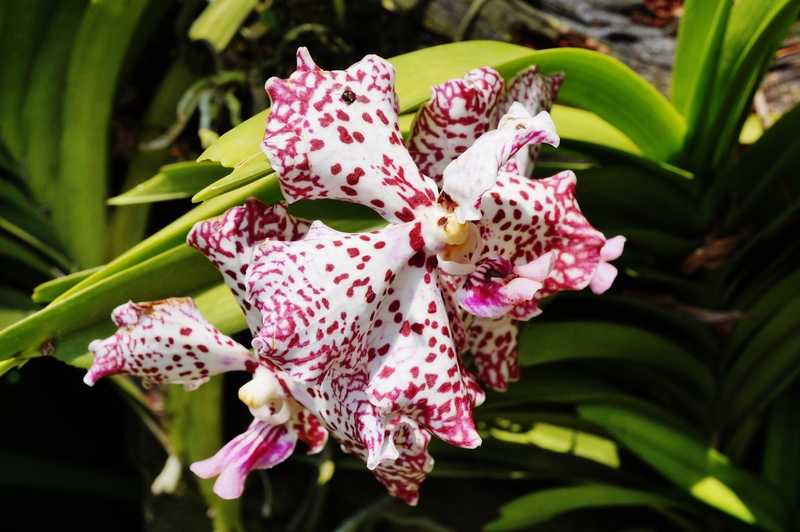Commercial Property Weed Control Solutions
Posted on 09/11/2024
Maintaining the aesthetic and functional value of a commercial property is pivotal to attracting tenants and customers. One of the overlooked aspects of property maintenance is weed control. Weeds not only detract from the property's visual appeal but can also harm the health of desirable plants and lead to significant management costs in the long term. This article will delve into effective weed control solutions tailored for commercial properties, highlighting various strategies and best practices to ensure comprehensive management.
Understanding Weeds and Their Impact
Weeds are unwanted plants that grow vigorously in areas where they aren't desired. They compete with ornamental plants, grass, and other desired vegetation for nutrients, water, and sunlight. For commercial properties, the presence of weeds can hamper the growth of decorative plants, create tripping hazards, and give an unkempt appearance, ultimately affecting property value and business reputation.
Some of the most common types of weeds found on commercial properties include:
- Crabgrass: Often found in lawns and gardens, it thrives in sunlight and can quickly spread if not controlled.
- Dandelions: Recognizable by their yellow flowers and puffball seeds, they are resilient and versatile.
- Clover: Known for its trifoliate leaves, clover can dominate turf areas, making it difficult for grass to grow.

Commercial Property Weed Control Solutions
Managing weeds on a commercial property involves a combination of preventive measures, active treatments, and ongoing maintenance. Here are some key strategies:
1. Pre-Emergent Herbicides
Pre-emergent herbicides are applied to the soil before weed seeds germinate. These herbicides create a chemical barrier that inhibits seedling development. They are particularly effective against annual weeds like crabgrass. For best results:
- Apply pre-emergent herbicides in early spring before the weed seeds begin to germinate.
- Ensure even distribution to cover the entire area, as gaps can allow weeds to establish.
- Follow manufacturer instructions regarding application rates and safety measures.
2. Post-Emergent Herbicides
Post-emergent herbicides are used after weeds have already emerged from the ground. They are effective in targeting specific types of weeds but need to be applied carefully to avoid damaging desirable plants. To use post-emergent herbicides effectively:
- Identify the weed species to select the appropriate herbicide.
- Apply during the growing season when weeds are actively growing for maximum absorption.
- Consider spot treatments to minimize herbicide usage and reduce potential damage to other plants.
3. Manual Weed Removal
While labor-intensive, manual weed removal is a direct and effective solution, especially for small infestations and hard-to-treat areas. It involves physically pulling out weeds or using tools to remove them. Benefits include:
- Reducing the immediate weed population without chemical use.
- Improving soil aeration when done correctly.
- Allowing precise removal, which is beneficial near ornamental plants.
4. Mulching
Mulch, a layer of organic or inorganic material spread on the soil surface, acts as a physical barrier to weed growth. Mulching helps to:
- Suppress weed seed germination and growth by blocking sunlight.
- Retain soil moisture and regulate soil temperature.
- Enhance the property's aesthetic value with a clean, uniform look.
5. Use of Landscaping Fabrics
Landscaping fabrics are permeable materials laid over soil to prevent weed growth while allowing water and nutrients to penetrate. They are particularly useful in ornamental beds and garden areas. Key points to consider include:
- Choosing high-quality, UV-resistant materials for durability.
- Securing the fabric properly to avoid displacement.
- Covering the fabric with mulch or decorative stones for added protection and visual appeal.
6. Integrated Pest Management (IPM)
IPM is a sustainable approach to managing weeds using a combination of biological, cultural, mechanical, and chemical methods. This holistic strategy minimizes the environmental impact while effectively controlling weeds. Elements of an IPM program might include:
- Regular monitoring and identification of weed species to tailor control methods.
- Encouraging beneficial organisms that help suppress weed growth.
- Implementing crop rotation and other cultural practices to disrupt weed life cycles.
Best Practices for Consistent Weed Control
Achieving long-term weed control on a commercial property requires adopting a consistent and proactive approach. Here are some best practices:
1. Regular Inspections
Conducting regular inspections allows for early detection of weed infestations and prompt intervention. Schedule inspections seasonally and after major weather events to adjust plans accordingly.
2. Proper Lawn and Plant Care
Healthy lawns and plants are more resistant to weed invasions. Maintaining optimal mowing heights, fertilization, and irrigation practices for different plant species can enhance their competitiveness over weeds.
3. Educating Property Maintenance Staff
Training maintenance staff on weed identification and control techniques ensures that they are well-equipped to manage issues as they arise. Providing ongoing education about new products and strategies can also be beneficial.
4. Collaboration with Professional Services
Engaging a professional landscaping or weed control service can provide expertise and access to advanced solutions not readily available to the general public. Professionals can also offer tailored management plans suited to the specific needs of the property.

Environmental Considerations
While weed control is crucial for maintaining commercial properties, it's important to consider the environmental impact of the methods used. Sustainable practices include:
- Choosing organic or less toxic herbicides whenever possible.
- Implementing non-chemical control methods like mulching and manual removal.
- Ensuring proper disposal of herbicide containers and leftover products to prevent environmental contamination.
Conclusion
Effective weed control solutions are essential for maintaining the aesthetic and functional value of commercial properties. By combining preventive measures, targeted treatments, and sustainable practices, property managers can keep weeds at bay and ensure a welcoming environment for tenants and customers. Regular maintenance, proper lawn care, staff training, and collaboration with professionals form the cornerstone of a comprehensive weed management program. Adopting these strategies will lead to a healthier, more attractive commercial property that stands out for its well-kept appearance.




